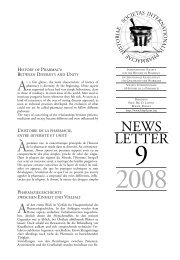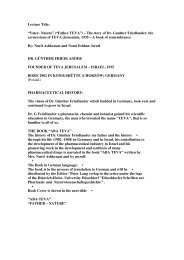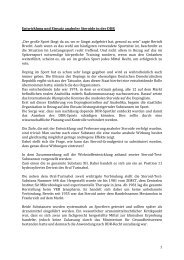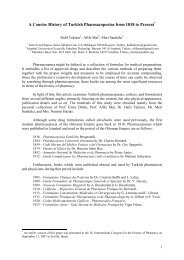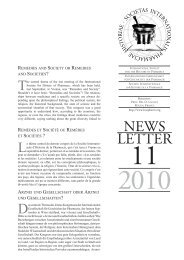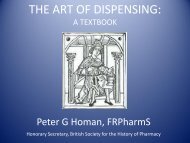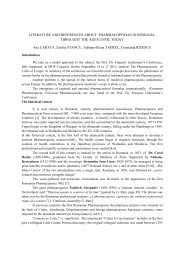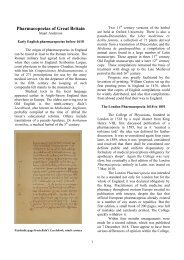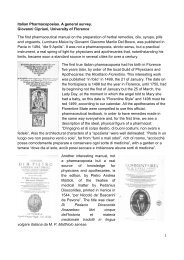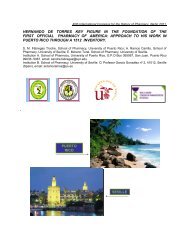don miguel mañara, don juan tenorio and the pharmacy
don miguel mañara, don juan tenorio and the pharmacy
don miguel mañara, don juan tenorio and the pharmacy
Create successful ePaper yourself
Turn your PDF publications into a flip-book with our unique Google optimized e-Paper software.
Documents research about D. Miguel Mañara.<br />
RESULTS:<br />
ILLUSTRATION 3. Private archives of <strong>the</strong> Santa Caridad in Seville.<br />
One of <strong>the</strong> vertexes of this hypo<strong>the</strong>tical triangle we’ve traced is that of <strong>the</strong> historical<br />
reality. Don Miguel Mañara is a unique, unrepeatable public figure, <strong>and</strong> belongs to <strong>the</strong><br />
patrimony of all those who live <strong>and</strong> work in Seville. He is unknown to a great number<br />
of Spaniards, <strong>and</strong> some know him as Don Juan Tenorio, while o<strong>the</strong>rs know him as a<br />
future Saint.<br />
One can get to know this mysterious 2 figure through <strong>the</strong> paintings which can be found<br />
in <strong>the</strong> Hospital de la Santa Caridad. Just by taking a stroll through <strong>the</strong> Sala de Cabildos<br />
del Hospital (“Town Council Ward”), one can see what is perhaps <strong>the</strong> painting that<br />
best represents him: “Don Migel leyendo la regla de la Santa Caridad” (Don Miguel<br />
reading <strong>the</strong> rules of <strong>the</strong> Santa Caridad), a work by Juan de Valdés Leal (1681) 3 .<br />
Ano<strong>the</strong>r way to get to know him is by w<strong>and</strong>ering through <strong>the</strong> city of Seville, perhaps<br />
along <strong>the</strong> street named after him, or perhaps by taking in various sculptures made of<br />
2 Curiously, Manara was buried twice, first at <strong>the</strong> explicit request in his will in <strong>the</strong> very soil of <strong>the</strong><br />
cemetery of <strong>the</strong> Church, so that everyone could step on his grave. The second, seven months after his<br />
death, he was buried in <strong>the</strong> crypt next to <strong>the</strong> altar of <strong>the</strong> Church, at <strong>the</strong> initiative of <strong>the</strong> Bro<strong>the</strong>rhood.<br />
3 For more information on <strong>the</strong> iconography of <strong>the</strong> saint Charity Hospital in Seville, see: VALDIVIESO,<br />
ENRIQUE AND Serrera, J. M. The Hospital de la Caridad in Seville. Valladolid, Editorial Server-Cuesta,<br />
1980.



